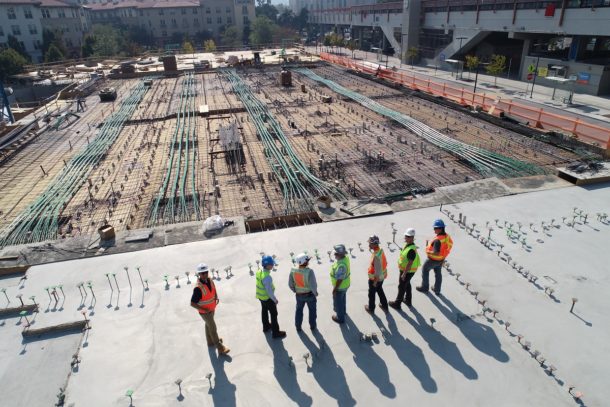When buying new construction materials or renovating an existing structure, there are many factors to consider before the first nail is struck. How will your home stand up to the weather? What type of insulation is right for you? Which roofing material is best? These questions can make the construction process seem overwhelming, but it doesn’t have to be. With the correct information, you can pick the perfect materials for your home no matter where you live. There are plenty of considerations when choosing new building materials that extend beyond cost and availability. Your area’s climate affects which materials will perform best and last longest. For example, a home in a humid area won’t last as long if it’s built with cedar siding or redwood in its walls because those woods are known to expand and contract with humidity changes. Knowing what challenges different climates present with unique construction materials is essential before beginning any project.

Climate-Based Building Material Guide
When choosing building materials, it’s vital to consider the climate where the building will be located. For example, is your area prone to floods, hurricanes, wildfires, or tornadoes? Some materials are better suited to each of these types of climates.
In these flood-prone areas, you’ll want to avoid any kind of wood for framing, flooring, and siding. Instead, go with concrete, stone, or brick. Whereas to survive storms, you’ll want to avoid low-lying areas that are prone to flooding. Instead, choose higher ground that avoids flooding or is built up enough to prevent flooding. For building materials, go with concrete and steel. You want to be careful with building materials that could create sparks in places prone to wildfires. Wood, fabrics, and types of vinyl can create sparks during wildfires and should be avoided. Instead, be sure to choose concrete, stone, or metal. Lastly, buildings that are prepared for tornadoes are built with reinforced concrete and steel, with tanks built underground to withstand high-velocity winds.
Wood Materials for Every Climate
Cedar is good for humid areas because it doesn’t expand or contract with humidity changes. However, it’s more expensive than other woods like redwood and pine. Cedar is also great for siding, decks, and fences. It’s very durable and can be treated with a sealant to protect against rot, insects, and water damage. Cedar is one of the best wood building materials for high humidity areas. It resists warping and rotting. It’s strong enough for outdoor use but isn’t as heavy as other hardwoods. It has a classic look and is easy to work with. It lasts for decades with minimal maintenance.
Redwood is suitable for outdoor use but isn’t great for high humidity areas because it expands and contracts with humidity changes. It’s softwood and isn’t as durable as other woods like cedar or pine. Redwood is best used for indoor projects like paneling, shelving, and cabinets. It’s great for painting, staining, and finishing. Redwood is one of the best wood building materials for temperate areas. It’s strong enough for outdoor use and lasts decades with minimal maintenance.
Concrete and Brick Materials for Every Climate
Concrete is a durable material that can be used for indoor or outdoor projects. It’s suitable for high humidity areas because it doesn’t warp, expand, or contract with humidity. Concrete is one of the best materials for foundations and basements because it’s mold-resistant, water-resistant, and durable. It’s also good for sidewalks, driveways, and walls. Concrete is one of the best materials for high-humidity areas. It’s strong and durable. It lasts decades with minimal maintenance.
Brick is another good material for high-humidity areas. It’s strong and lasts decades with minimal maintenance. It’s not great for outdoor use unless it’s covered in concrete. Brick is good for indoor projects like fireplaces, walls, and walkways. It’s great for patios and outdoor walkways because it’s durable and looks great. Brick is one of the best materials for humid areas. It’s strong, durable, and lasts for decades with minimal maintenance.
Metal Materials for Every Climate
Steel is a strong building material that’s used for frames and roofs. It’s great for high-humidity areas because it doesn’t warp, expand, or contract with humidity. Steel is common for roofing because it’s strong but lightweight. It’s also suitable for building and framing. Steel is one of the best materials for high-humidity areas. It’s strong and lasts decades with minimal maintenance. Steel is one of the best materials for high-humidity areas. It’s strong and lasts decades with minimal repairs required.
Aluminum is another good metal building material. It’s lightweight but strong and good for high-humidity areas. It doesn’t warp or expand or contract with humidity. Aluminum is great for siding and roofing. It’s strong, lightweight, and lasts decades with minimal maintenance. Aluminum is one of the best materials for high-humidity areas. It’s strong and lasts decades with minimal maintenance.
Roofing Options for Every Climate
Asphalt shingles are a popular choice for roofs. They resist wind, hail, and fire. However, they don’t last as long in high-humidity areas because they warp and expand with humidity changes. Asphalt shingles are a good option for low- to moderate-humidity sites. They’re durable and last 25-40 years with minimal maintenance. Asphalt shingles are one of the best materials for low-humidity areas. They’re solid and last decades with minimal upkeep needed. In addition, they’re affordable, easy to install and come in various colors.
Concrete roofing is a high-end material that lasts a long time. It doesn’t warp or expand or contract with humidity. Concrete roofing is a good option for high-humidity areas. It lasts decades with minimal maintenance. Concrete roofing is one of the best materials for high-humidity areas. It’s strong and lasts decades with minimal maintenance. Metal Roofing: Metal roofing is durable and lasts a long time. It doesn’t warp or expand or contract with humidity. Metal roofing is a good option for high-humidity areas. It lasts decades with minimal maintenance. Metal roofing is one of the best materials for high-humidity areas. It’s strong and lasts decades with few repairs to upkeep.
Conclusion
The building supplies you choose will significantly impact the performance of your new home or renovation. They’ll be the first line of defense against the elements, so it’s essential to choose wisely. Choosing suitable materials is tricky since there are so many factors to consider. Hopefully, this guide has helped you find the best materials for your particular climate.




Join the conversation: